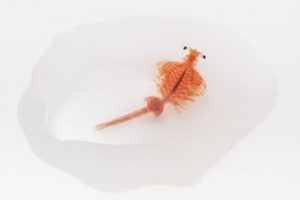When it comes to lasers, custom lenses are designed for use in applications that range from photography to science. One way that lasers are being used is by researchers that are studying underwater lifeforms that include brine shrimp. If you don’t know what brine shrimp are, think of the Sea Monkeys you may have had as a child! These underwater creatures, especially if they gather in large herds and swarm, can impact the ocean currents, researchers have found.
Previously, scientists had considered that plankton, those tiny marine creatures, simply drifted along on the current, but they’ve discovered recently that they might move through the ocean in dense layers. The movement of these creatures, if the group is large enough, could mix up the sea water because they’re impacting the movement of the currents themselves. Some researchers are now thinking that this movement could lead to future changes in the earth’s climate.
How can brine shrimp impact the climate?
If the brine shrimp are moving as a collective through wind and tide driven currents to find food and nutrients, they are also moving the other nutrients and salt around on the ocean floor and this could help to regulate the earth’s temperatures. It’s been in recent years that scientists have begun to study whether “collective animal movements” could not only contribute to currents, but change the way the currents flow.
It was discovered in 2009 that jellyfish move through the water over great distances – longer than their actual body lengths – simply by swimming. The water that is closest to the jellyfish will cling to it and will be moved to a new location during the swimming, thus distributing salt and nutrients to a different part of the underwater ecological system.
To determine the effect that underwater sea creatures such as brine shrimp might have on the ecological system, researchers seeded the water with silver coated hollow glass spheres so they could study the water flow the brine shrimp churned up with their movements. Because the brine shrimp are drawn to laser light, researchers used that to trigger a migration of the shrimp.
What the researchers found was that the trail of water the shrimp produced was much larger than the size of the shrimp themselves and that it showed that the water through which they swam was being churned up and nutrients were being moved from one location to another.
UKA Optics manufactures lenses for marine studies, military use, and many other industries. Lenses are useful for diode laser collimators, CD and DVD players, laser pointers, laser levels, laser surface inspection systems and positioning and measuring equipment.